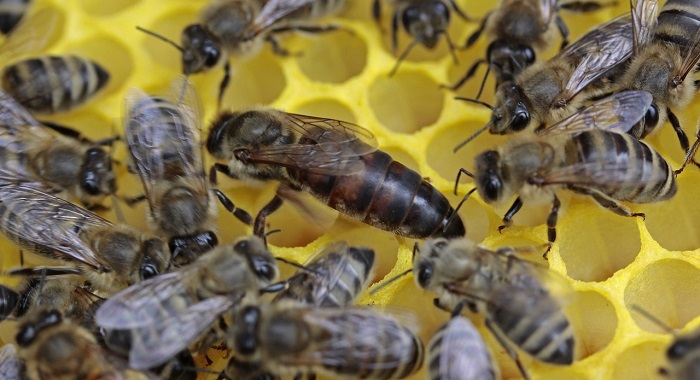Podcast: Play in new window

BOB HIRSHON (host):
Making queen bees. I’m Bob Hirshon and this is Science Update.
Honeybee queens are vastly different from worker bees despite being genetically identical. Queen bees result when workers feed large amounts of a substance called royal jelly to bee larvae. Now, researchers have discovered that royal jelly changes the expression of hundreds of genes, via modifications to proteins called histones. They report in the journal Genome Research that these changes play a key role in creating queens.
RYSZARD MALESKA (Australian National University):
Histones can tell the genome which part can be expressed, and when. And the differences were quite profound.
HIRSHON:
Australian National University geneticist Ryszard Maleska says the work has implications for human health. While we don’t develop into workers and queens, big changes to our diets also modify histones in our genetic code.
MALESKA:
I have no doubt that this is almost identical in humans.
HIRSHON:
I’m Bob Hirshon, for AAAS, the science society.
Story by Susanne Bard
Queen Mary University collaborated on this research
